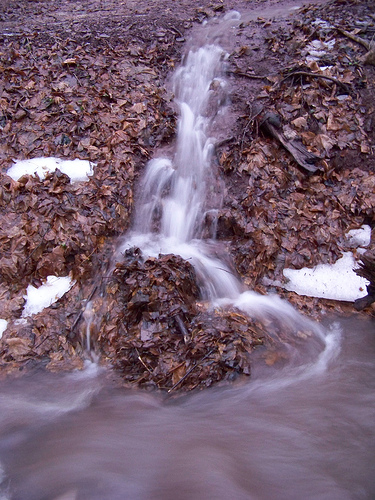AARP Eye Center
Catch Your Storm-Water Rebate
By Jeff Yeager, October 14, 2013 01:51 PM

Rarely does a piece of mail from our local county government contain good news. It's typically a property tax bill or a notice that our trash-collection fees are going up again. But the other day I received news from the county and it made my inner cheapskate sit up and take notice.
Like an increasing number of counties and municipalities across the country, our county has initiated a Rain Check Rebate Program, designed to encourage property owners to take steps to reduce storm- water runoff from their property. Storm-water runoff occurs when rain or water from melted snow flows over land and eventually into local streams and rivers, rather than soaking into the ground or being captured for later use. It's a major problem, since the runoff picks up pollutants like oil, grease, chemical fertilizers and other hazardous sediments, all of which end up in our waterways.
Sign up for the AARP Money Matters newsletter.
To combat the problem, our county has started to offer cash rebates to property owners who make approved storm-water-management modifications to their property. Depending on the project, the rebates are designed to cover some or even all of the cost of preapproved improvements.
For example, we can receive up to $1,200 for planting trees on our property to increase the so-called "urban tree canopy"-as a way of intercepting and absorbing rainwater before it becomes runoff. Other rebates are offered for projects like installing a cistern or rain barrel, planting a rain garden, and building a "green roof," with vegetation growing on it to absorb rainwater and to help reduce home heating and cooling costs. A big part of the storm-water runoff problem is pavement, so you can get a rebate for removing concrete and asphalt and for installing surfaces that allow water to be absorbed into the ground.
Similar programs, often initiated by municipal governments rather than counties, are sprouting up throughout the U.S., including in California, Washington, Wisconsin, Massachusetts, Missouri and elsewhere. Such storm-water mitigation programs are more common in urban and suburban areas. In some cases, the programs are structured as a tax or utility credit, rather than a cash rebate like in our county.
Contact the environmental division of your municipal and county governments to see if they offer such a program, and if they don't, encourage them to start one.
Get discounts on financial products and services with your AARP Member Advantages.
Many of the storm-water fixes prescribed under these programs make sound economic sense for homeowners to undertake at their own expense, even without government assistance. Installing a simple, ready-made, 50-gallon rain barrel (where permitted), for example, costs only about $100 and will save you money for years to come on your water bill, by providing a free source of water for your garden and lawn. And according to the U.S. Department of Energy, a few carefully positioned trees around your home can reduce cooling and heating costs by as much as 25 percent.
Who said that it costs more to live green?
Photo: Jasonb42882/Flickr

Also of Interest
- Slideshow: 10 Indoor Home Improvements for Under $100
- How to Leave an Inheritance to Your Kids
- Shopping for health insurance? The health insurance marketplace is now open
- Join AARP: Savings, resources and news for your well-being
See the AARP home page for deals, savings tips, trivia and more























































